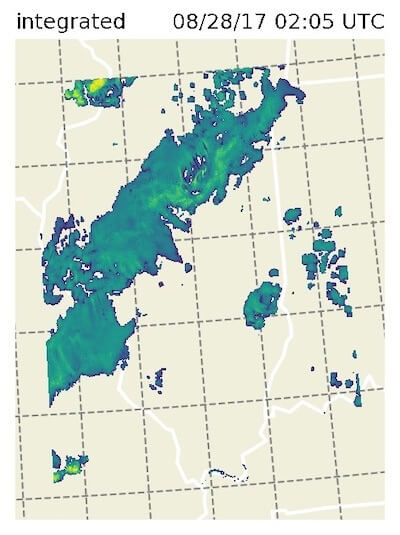In the U.S., weather data begins and ends with the National Oceanic and Atmospheric Administration. Its High-Resolution Rapid Refresh model assimilates observation data every 15 minutes and provides updated weather predictions every hour.
To get better data than what NOAA provides, you’d need to invest billions of dollars to build out a new layer of sensors. Or hire teams of Ph.D.s doing some magical data science.
Boston-based startup Tomorrow.io had a better idea: software.
A trio of Israeli military veterans – Shimon Elkabetz, Itai Zlotnik and Rei Goffer – founded the weather tech company in 2015. All three were heavy consumers of weather information during their years in the military. Real-time, historical, future — name the timeframe and they needed to know the weather for it.
But they noticed there were significant gaps in the information. The data didn’t come quickly enough, and their forecasting efforts lacked precision.
Reunited a few years later while working on graduate degrees at Harvard and MIT, the three compared their stories. They realized they had an opportunity to revolutionize the use of weather data with hyper-local, accurate, high-resolution “nowcasting” that helps businesses and people make better decisions.
“To do something significant, we had to improve the modeling perspective, and also the computing power perspective,” Elkabetz said. “The next phase for us is to go from being a weather information provider to an intelligence provider.”
New Source of Weather Insight
The market Tomorrow.io is going after isn’t just looking up the weather online before deciding to wear a jacket or bring an umbrella to work. They aim to unlock the data behind the weather for aviation, military, driving, construction, finance, event planning and other markets.
To achieve this, Elkabetz said, the company had to tap, and improve upon, a real-time source of weather data. The answer the company’s founders settled on: Writing software that creates more sensors by tapping into the signals of existing communication networks. Tomorrow.io uses these nodes spread throughout a geography to sense their environments and extract real-time weather data.
“What we’re accessing is signals and measurements from a variety of networks,” said Elkabetz. “We are assembling the networks constantly, analyzing the signals very fast, integrating them with NOAA data, and then plugging everything together in a model that’s running on GPUs.”
Tomorrow.io uses this data to create a nowcasting model that provides short-term weather predictions for the ensuing three to six hours. In other words, the company’s solution builds upon NOAA data to deliver something better and more immediate.
“Our model is updated every minute,” Elkabetz said. “It is refreshing at a much, much faster rate” than NOAA’s.
The Road to Global Impact
A key ingredient in Tomorrow.io’s technology is the GPU. The company uses NVIDIA Tesla GPU accelerators at several levels — for rapid and frequent data visualizations, running its algorithms, analyzing signals and, eventually, for running the predictive models it’s working on.
Elkabetz credits the affordability, speed and availability of modern GPUs, not to mention their use by cloud providers, for enabling young companies like Tomorrow.io to build services never before thought possible.
And while Tomorrow.io’s work has it eyeing many new markets, including insurance, outdoor entertainment and on-demand services such as ride-sharing, its biggest impact down the line may be less about generating revenue and more about changing the world.
“The most exciting aspect,” Elkabetz said, “is the implementation of this technology in other countries where this kind of data is not as reliable.”
Read the original story here: https://blogs.nvidia.com/blog/2017/10/17/nowcasting/















